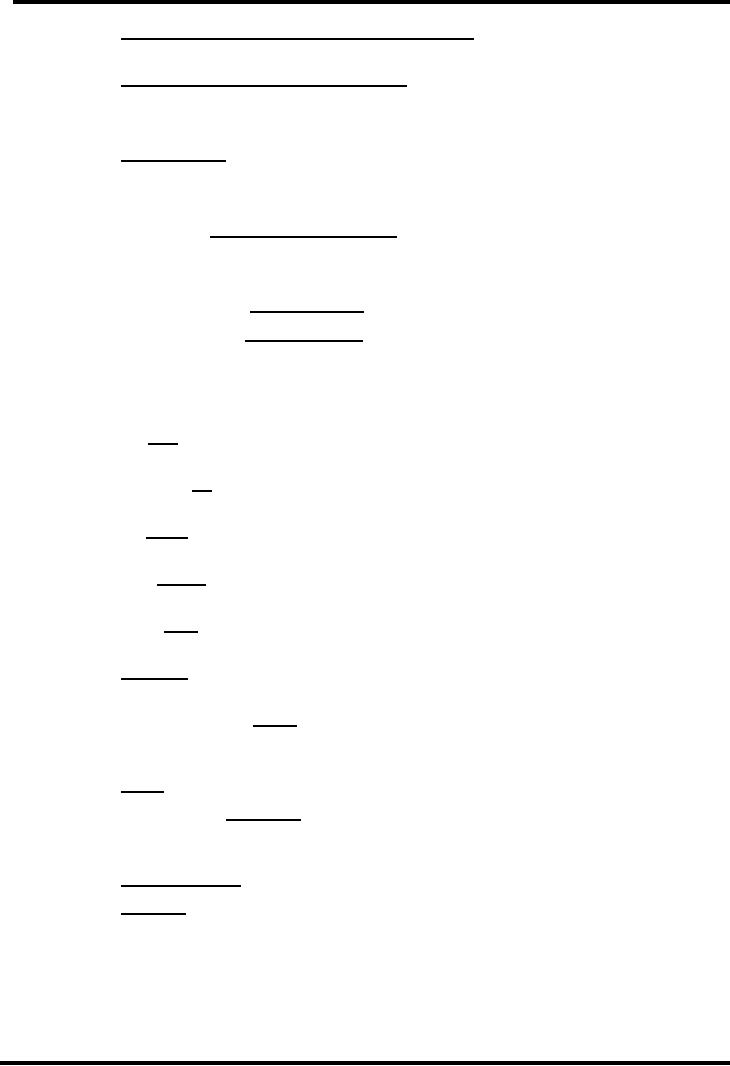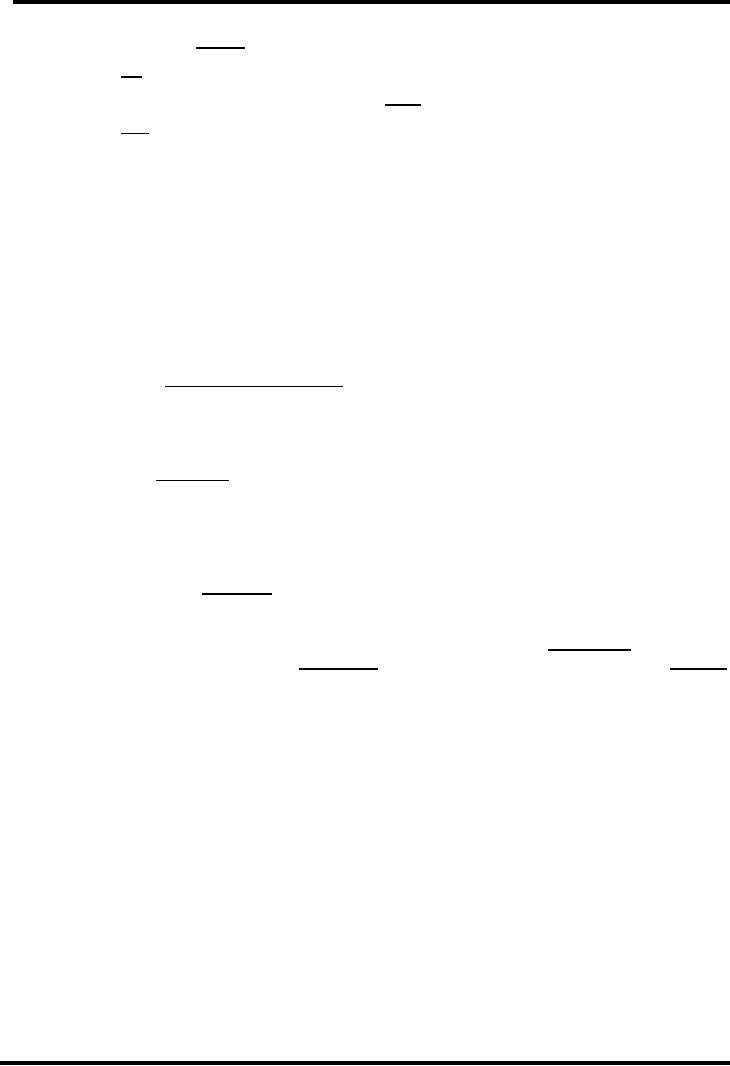 |
Punctuation:THE PERIOD, THE COMMA, THE SEMICOLON, THE COLON |
| << Summary and Précis Writing:CHARACTERISTICS OF GOOD SUMMARY |
| MECHANICS:ABBREVIATIONS, NUMBERS, SPELLING, THE HYPHEN >> |

Journalistic
Writing MCM310
VU
LECTURE
29
Punctuation
Punctuation
in English writing is like traffic lights
and traffic signs. It helps
the reader understand what
you
are writing. The punctuation
marks used most commonly in
English are:
Period
(.)
Question
Mark (?)
Comma
(,)
Exclamation
point (!)
Semicolon
(;)
Quotation
mark (")
Colon
(:)
Parenthesis
( )
Apostrophe
(`)
Dash
(-)
THE
PERIOD:
The
period is a red light or stop
sign. So use a period to end
a sentence.
Bill
asked whether our class will
be cancelled tomorrow.
Use
a period to improve the flow
of writing.
Sometimes,
there are too many
ideas packed into one
sentence. Use periods and
shorter sentences as follows
to
improve the flow and
understanding.
1.
For temperatures above
1100K, the four fuels had
about the same ignition delay when the
ignition delay was
defined
as the time to recover the pressure loss
from fuel evaporation, in spite of the
large variations in
ignition
delay among the four fuels
at lower temperatures.
2.
Ignition delay is the time required to
recover the pressure loss
from fuel evaporation. Despite the
large
variations
in ignition delay at lower
temperatures, the four fuels
had about the same ignition
delay for
temperatures
above 1100K.
Use
a period in conventional
abbreviations.
Mr.
(mister);
Mrs.
(misses)
Dr.
(doctor);
Ph.D.
(Doctor of Philosophy)
e.g.
(exempli gratia);
etc.
(et cetera)
i.e.
(id est);
p.s.
(post scriptum)
Sometimes
the period is omitted in an
abbreviation using capital
letters:
AM
PM
BA
MA
Do
not use a period in abbreviating
names of organizations.
UN
USA
WHO
IBM
FAO
ILO
THE
COMMA:
Use
a comma before a coordinating conjunction
(and, but, or, nor,
for, so, yet) when it is
used to join
independent
clauses.
She
looks very young, but
she is
already in her 30's.
If
the two independent clauses
are short and not likely to be misread,
no comma is needed.
The
plane took off and we
were on our way.
110

Journalistic
Writing MCM310
VU
Use
a comma after an introductory clause or
phrase.
When
Sam looked in the path near
the school building, he found
his lost book.
Use
a comma after an introductory participial
phrase that describes the
noun or pronoun that follows.
Struggling
with large amounts of homework, the
class feared the
exam.
Having
seen pictures of the beach, the
children eagerly looked
forward to summer.
Use
`a' in semi-parenthetical
clause
Bill,
the tall one, is
here.
Jinnah,
the founding father of Pakistan,
was a lawyer by
profession.
Use
a comma between all items in a
series
I
brought my books, papers, and computer to
the classroom.
We
will prepare the specimens, conduct the
tests, and record the
data.
Use
a comma between multiple
adjectives.
Same
has become a strong,
confident, independent man.
The
laboratory is a small, windowless,
poorly lighted room.
Do
not use a comma between cumulative
adjectives.
Three
large gray trucks tooled
down the street.
Use
a comma in a dialogue
She
said, "Hello."
Dates
December
25, 2006
Titles
Joe
Smith, Ph.D.
Informal
letter salutation
Dear
Aroma,
Letter
closing
Yours
truly,
Inverted
names
Smith,
Joe
Use
comma to set off
numbers
The
total price is Rs
23,456.
Use
commas to set off
contrasting elements.
Sharp
contrasts begin with words
such as not, never,
and unlike.
Unlike
Robert, Viola loved speech
contests.
We
use alcohol, never water, to sterilize
the instruments.
Use
commas to set off transitional
expressions.
However,
therefore, moreover, for
example, as a matter of fact, in
other words
As
a matter of fact, many of the
musicians have hearing
problems
Therefore,
they frequently need hearing
assistance.
If
a transitional expression is between
independent clauses, precede it
with a semicolon (;) and
follow
it
with a comma.
Natural
foods are not always salt
free; for examples, celery
contains more salt than
most
people
would imagine.
111

Journalistic
Writing MCM310
VU
Use
commas to set off direct
address, question tags, and
interjections.
Forgive
us, Professor, for
being late in sending our
homework.
Yes, but
don't do it again.
This
is the third time you have
been late, isn't
it?
Well, we
sometimes have lots of other
homework to do.
Use
commas to avoid
confusion.
To
err is human; to forgive,
divine.
THE
SEMICOLON (;)
Let's
begin with a simple
sentence:
Grandma
stays up too late.
Now
let's expand on that a
bit:
Grandma
stays up too late. She's
afraid she's going to miss
something.
What
if we try to combine the two
ideas?
Grandma
stays up too late, she's
afraid she's going to miss
something.
We
could insert a coordinating conjunction:
Grandma
stays up too late, as she is
afraid she'll miss
something.
We
could also try subordinating one of
these ideas
Grandma
stays up too late because
she's afraid she's going to miss
something.
Let's
try using a semicolon in this
sentence
Grandma
stays up too late; she's
afraid she's going to miss
something.
Stronger
than a comma
Peace
is difficult; war is
hell.
To
set off conjunctive
adverb
He
was tired; therefore, he
quit.
Use
semi-colons to connect information
groups in a sentence
The
committee included Dr Val, Professor of
Linguistics, from Nottingham; Virginia
Villa,
Professor
of English, from Manchester; Paul
Anderson, Director of Rad-Tech, from
Reading;
and
Joan Leach, Professor of
Nursing, from
Edinburgh.
THE
COLON (:)
Introduce
a series
He
has three things: money,
brains, charm.
Separate
sub-titles/sub-heads
The
book: How To Read
It.
Punctuation:
the colon
Set
of a clause
The
rule is this: Keep it simple.
Letter
salutation like Dear Sir:
Times
and ratios
7:45
A.M, Mix it 3:1
To
form possessive
Bill's
bike.
112

Journalistic
Writing MCM310
VU
Contractions
Isn't
Plurals
of symbols
1960's,
two A's
THE
QUESTION MARK (?)
At
the end of
question
Who
is he?
To
express doubt
He
weighs 250 (?)
pounds.
THE
EXCLAMATION MARKS
(!)
Show
strong emotions
Aroma
is the best!
Wow!
THE
QUOTATION MARK
(")
Direct
quote
He
said, "Hello."
Titles
He
read, "King Lear."
Special
words or slang
He
is "nuts."
THE
PARENTHESIS ( )
Supplementary
material
The
map (see illustration) is
good.
Stronger
than commas
Joe
(the bad boy) is
dead.
Enclose
numbers
Her
car is (1) a Ford, (2)
too slow.
THE
DASH
Show
duration
1947-2007,
Lahore-Pakistan
Parenthetical
material
The
girl-the pretty one-is
here.
Two
show omissions
She
called him a ---.
Source:
Hacker, Dianna. A Writer's Reference
Boston: St. Martin's Press.
1992.
113
Table of Contents:
- INTRODUCTION TO JOURNALISTIC WRITING:Practical, THINGS TO KNOW
- QUALITIES OF GOOD WRITERS
- QUALITIES OF GOOD WRITERS
- QUALITIES OF GOOD WRITING:Achieve appropriate readability:
- QUALITIES OF GOOD WRITING:Be concise, Be creative, Be correct
- THE PROCESS OF WRITING:INVENTION, WHEN YOU START TO WRITE
- THE PROCESS OF WRITING II:ORGANIZING, DRAFTING, REVISING
- ALL ABOUT WORDS:HOW WORDS ARE FORMED?:SUFFIXES
- DICTIONARY-A WRITER’S LANGUAGE TOOL:KINDS OF INFORMATION
- PARTS OF SPEECH:Noun Gender, Noun Plurals, Countable Nouns
- BASIC CLAUSE PATTERNS
- ACTIVE AND PASSSIVE VOICE
- MODIFIERS AND SENTENCE TYPES:COMPOUND SENTENCES
- REPORTED SPEECH:Indirect Questions, Direct commands
- GRAMMATICAL SENTENCE – ISSUES:SUBJECT-VERB AGREEMENT
- GRAMMATICAL SENTENCE – ISSUES II:SENTENCE FRAGMENTS
- EFFECTIVE SENTENCE:PARALLELISM, NEEDED WORDS, SHIFTS
- STYLE: GUIDELINE AND PITFALLS I:COLLOQUIAL VS FORMAL, CIRCUMLOCUTION
- STYLE: GUIDELINE AND PITFALLS II:AMBIGUITY, REDUNDANCY, EUPHEMISM:
- PARAGRAPH WRITING: TYPES AND TECHNIQUES:STRUCTURE
- PARAGRAPH WRITING: TYPES AND TECHNIQUES:Putting on Our Play
- ESSAY WRITING:VARIOUS STRATEGIES FOR ESSAYS, PROMPTS
- SIGNAL WORDS:Non word Emphasis Signals
- EXPOSITORY WRITING:LOGICAL FALLACIES, APPEAL TO EMOTION
- THE WRITING STYLES: REPORT and NARRATIVE WRITING, SHORT REPORTS
- THE WRITING STYLES: DESCRIPTIVE AND PERSUASIVE WRITINGS, Observation
- RESEARCH WRITING AND DOCUMNETING SOURCES:Handling Long Quotations
- Summary and Précis Writing:CHARACTERISTICS OF GOOD SUMMARY
- Punctuation:THE PERIOD, THE COMMA, THE SEMICOLON, THE COLON
- MECHANICS:ABBREVIATIONS, NUMBERS, SPELLING, THE HYPHEN
- READING SKILLS FOR WRITERS:EDUCATED READING, STEPS
- PARTS OF A NEWSPAPER:Box-out, By-line, Caption, Exclusive, Feature
- THE LANGUAGE OF THE NEWSPAPERS II:BROADSHEET NEWSPAPER
- News Writing and Style I:WHAT TO LOOK FOR IN A NEWSPAPER
- NEWS WRITING II:Accuracy, Clarity, Style, Qualities of Effective Leads
- EDITORIAL WRITING:WRITING AN EDITORIAL:STRUCTURING AN EDITORIAL
- WRITING FEATURES:GENERATING FEATURE STORY IDEAS
- WRITING COLUMNS:Column and a news report, Purpose, Audience
- WRITING ARTICLES FOR NEWSPAPERS:The Heading, The Lead
- WRITING ANALYSIS:purpose, scope, method, results, recommendations
- LETTERS TO EDITORS:Four important aspects about letters, Organizing letters
- BROADCAST AND WEB NEWS WRITING:WRITE CONCISELY, BROADCAST STYLE
- WRITING PRESS RELEASE, REVIEWS AND OBITUARIES:Summary of Content:
- THE ART OF INTERVIEWINGS
- FINAL THOUGHTS:Practical, Job-Related, Social, Stimulating, Therapeutic